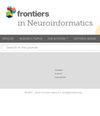湍流动力学和全脑建模:迈向脑外伤临床应用的新方向
IF 2.5
4区 医学
Q2 MATHEMATICAL & COMPUTATIONAL BIOLOGY
引用次数: 0
摘要
创伤性脑损伤(TBI)是一种普遍存在的疾病,其主要特征是认知功能持续受损,给全世界的护理人员和医疗保健系统造成了巨大负担。至关重要的是,严重程度分类主要基于临床评估,而临床评估是非特异性的,对长期残疾的预测性很差。在这篇微型综述中,我们首先介绍了我们在湍流动力学框架内采用的无模型和基于模型的方法,以及我们对这些方法如何可能有助于为创伤性脑损伤提供新的神经影像生物标记的看法。此外,我们还报告了最近通过应用湍流动力学框架(无模型方法)和霍普夫全脑计算模型(基于模型方法)并结合硅学扰动,对中度严重创伤性脑损伤(msTBI)患者在一年自发恢复期间的纵向变化进行研究的主要结果。鉴于创伤性脑损伤后的神经炎症反应和神经退行性变的风险增加,我们还提出了探索与基因组信息关联的未来方向。此外,我们还根据最近的研究结果,讨论了全脑计算建模可如何推进我们对毫秒创伤性脑损伤后结构断开对全脑动力学影响的理解。最后,我们提出了全脑计算建模可能有助于确定脑深部刺激的最佳脑目标以促进创伤性脑损伤康复的未来途径。本文章由计算机程序翻译,如有差异,请以英文原文为准。
Turbulent dynamics and whole-brain modeling: toward new clinical applications for traumatic brain injury
Traumatic Brain Injury (TBI) is a prevalent disorder mostly characterized by persistent impairments in cognitive function that poses a substantial burden on caregivers and the healthcare system worldwide. Crucially, severity classification is primarily based on clinical evaluations, which are non-specific and poorly predictive of long-term disability. In this Mini Review, we first provide a description of our model-free and model-based approaches within the turbulent dynamics framework as well as our vision on how they can potentially contribute to provide new neuroimaging biomarkers for TBI. In addition, we report the main findings of our recent study examining longitudinal changes in moderate-severe TBI (msTBI) patients during a one year spontaneous recovery by applying the turbulent dynamics framework (model-free approach) and the Hopf whole-brain computational model (model-based approach) combined with in silico perturbations. Given the neuroinflammatory response and heightened risk for neurodegeneration after TBI, we also offer future directions to explore the association with genomic information. Moreover, we discuss how whole-brain computational modeling may advance our understanding of the impact of structural disconnection on whole-brain dynamics after msTBI in light of our recent findings. Lastly, we suggest future avenues whereby whole-brain computational modeling may assist the identification of optimal brain targets for deep brain stimulation to promote TBI recovery.
求助全文
通过发布文献求助,成功后即可免费获取论文全文。
去求助
来源期刊

Frontiers in Neuroinformatics
MATHEMATICAL & COMPUTATIONAL BIOLOGY-NEUROSCIENCES
CiteScore
4.80
自引率
5.70%
发文量
132
审稿时长
14 weeks
期刊介绍:
Frontiers in Neuroinformatics publishes rigorously peer-reviewed research on the development and implementation of numerical/computational models and analytical tools used to share, integrate and analyze experimental data and advance theories of the nervous system functions. Specialty Chief Editors Jan G. Bjaalie at the University of Oslo and Sean L. Hill at the École Polytechnique Fédérale de Lausanne are supported by an outstanding Editorial Board of international experts. This multidisciplinary open-access journal is at the forefront of disseminating and communicating scientific knowledge and impactful discoveries to researchers, academics and the public worldwide.
Neuroscience is being propelled into the information age as the volume of information explodes, demanding organization and synthesis. Novel synthesis approaches are opening up a new dimension for the exploration of the components of brain elements and systems and the vast number of variables that underlie their functions. Neural data is highly heterogeneous with complex inter-relations across multiple levels, driving the need for innovative organizing and synthesizing approaches from genes to cognition, and covering a range of species and disease states.
Frontiers in Neuroinformatics therefore welcomes submissions on existing neuroscience databases, development of data and knowledge bases for all levels of neuroscience, applications and technologies that can facilitate data sharing (interoperability, formats, terminologies, and ontologies), and novel tools for data acquisition, analyses, visualization, and dissemination of nervous system data. Our journal welcomes submissions on new tools (software and hardware) that support brain modeling, and the merging of neuroscience databases with brain models used for simulation and visualization.
 求助内容:
求助内容: 应助结果提醒方式:
应助结果提醒方式:


